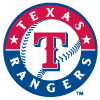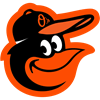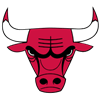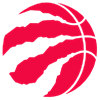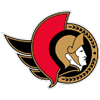One of the biggest challenges for a new or intermediate player is mastering the art of stacking for tournaments. You are trying to put together an intricate puzzle that will deliver the highest output. But it is not that easy. I am going to break down two lineups I played in tournaments on DraftKings and give you my thought process on how I built them.
Before we get into this weeks' article, check out these articles in our DFS 101 series about stacking:
DFS Baseball 101: The Art of Stacking (8/4/2014)
DFS Baseball 101: The Art of Stacking (4/19/2016)
DFS Baseball 101: Stacking Strategy, Part 1 (7/5/2017)
DFS Baseball 101: Stacking Strategy, Part 2 (7/15/2017)
Contest Selection
I focus on single entry and lower "max" entry (they are usually max of three or 20) tournaments because I want to avoid the 150 multiple entry player. I went with the $12 single entry (1470 entries) and the $3 max three entries (3,963 entries). You need enough money in the tournament to make it worth your while, but you should avoid anything with more than 5,000 entries as your odds get worse to finish at the top of the leaderboard.
Pick Main Stack First
I was on the Braves at home against a weak left-handed pitcher, Tyler Anderson. The Braves' total was 5.4 runs, which was the highest on the board, so I knew ownership would be high. I have seen too many players run away from the "chalk" (public play) so many times. Do not out-think yourself. Do you want all chalk? No. But having some and finding other ways to differentiate is the best strategy.
The Braves crush left-handed pitching, and I got three strong right-handed batters along with Freddie Freeman. I left Freeman in the stack on purpose because he is a left-handed hitter going against a left-handed pitcher. A lot of players will "break" up the stack and avoid lefty/lefty, but a hitter like Freeman is so good that you can leave him in. He ended up being 8 percent owned.
Stack Two Teams
This is very hard to do as everything needs to line up. Look for a 5-2 or 4-3 stack. If you can keep the 1-2-3-4 hitters intact it can be a huge hit if everything breaks right. I really liked the Twins after the Braves and wanted to get exposure to both teams.
The Twins had the second-highest team total at 5.1 and they ranked third in wRC+ against right-handed pitching. Plus the positions and lineup order worked out perfectly so that I could get 1-2-3-4 and 1-2-3 in at the same time.
Once you start building tournament teams with hitting first, it will become much easier because when you get to catcher and pitching, your decisions narrow.
Cheap Pitching is Plentiful
It is not an exact science to nail cheap pitching, never mind two on the same DFS team. That is why you will often see a build with an ace pitcher and a mid-priced pitcher. There will be one main hitting stack and a bunch of value bats to round out the build. I decided to be different and go the two-cheap pitcher routes because I felt comfortable with both.
Pablo Lopez would be low owned as a Marlins pitcher on the road, but he had a 9.9 K/9, 1.71 BB/9 and 3.50 xFIP. All great numbers, and for the price of $6,200 I was buying. I look for pitching in games that will be closer and lower scoring. The game total was 7.5 and the Phillies were without Odubel Herrera and J.T. Realmuto.
Reynaldo Lopez was going to be very popular, but he was in a great spot at home against the weak Tigers lineup and his price was $7,500. He was coming off a 21.3-point game against the Tigers last week and a 21.3-point game against the Royals the one before that. The Tigers were 25th against RHP in wRC+ and 22nd on the road (No. 1 in K% at 31 percent).
The Least Important Position
Catchers typically bat 7-8-9, so they won't be a part of a stack. It also is the position with the least amount of upside. Punting catcher allows you to spend as much as possible on hitting. The only time I will include a catcher is if he is batting ninth and I can get a wraparound stack (9-1-2-3-4). Otherwise I'm going with the cheapest one on the board that fits. If I can get a right-handed hitter against a left-handed pitcher that is a bonus.
Here is what my lineups looked like with Twins/Braves stacks.
First Entry
POS | PLAYER | TEAM | ORDER | BATS | SALARY | POINTS | % OWNED |
|---|---|---|---|---|---|---|---|
P | Pablo Lopez | MIA |
|
| $6,200 | 8.55 | 3.4 |
P | Reynaldo Lopez | CHW |
|
| $7,500 | 42.5 | 26.5 |
C | Cam Gallagher | KC | 9 | R | $2,900 | 2 | 5.2 |
1B | Freddie Freeman | ATL | 3 | L | $5,200 | 23 | 8.6 |
2B | Ozzie Albies | ATL | 1 | S | $4,700 | 33 | 19.9 |
3B | Josh Donaldson | ATL | 2 | R | $4,400 | 24 | 17.0 |
SS | Jorge Polanco | MIN | 2 | S | $4,800 | 5 | 13.7 |
OF | Nelson Cruz | MIN | 3 | R | $5,200 | 0 | 4.0 |
OF | Ronald Acuna | ATL | 4 | R | $4,900 | 4 | 26.2 |
OF | Max Kepler | MIN | 1 | L | $4,200 | 21 | 21.0 |
Total Points: 163.05
Second Entry
POS | PLAYER | TEAM | ORDER | BATS | SALARY | POINTS | % OWNED |
|---|---|---|---|---|---|---|---|
P | Pablo Lopez | MIA |
|
| $6,200 | 8.55 | 3.1 |
P | Reynaldo Lopez | CHW |
|
| $7,500 | 42.5 | 30.2 |
C | Grayson Greiner | DET | 8 | R | $3,500 | 5 | 2.5 |
1B | C.J. Cron | MIN | 5 | R | $4,000 | 4 | 16.5 |
2B | Ozzie Albies | ATL | 1 | S | $4,700 | 33 | 22.4 |
3B | Josh Donaldson | ATL | 2 | R | $4,400 | 24 | 17.7 |
SS | Jorge Polanco | MIN | 2 | S | $4,800 | 5 | 13.8 |
OF | Nelson Cruz | MIN | 3 | R | $5,200 | 0 | 13.2 |
OF | Eddie Rosario | MIN | 4 | L | $5,500 | 4 | 14.2 |
OF | Max Kepler | MIN | 1 | L | $4,200 | 21 | 29.3 |
Total Points: 147.05
Overall both lineups cashed and the strategy worked out well. There are several ways to attack a tournament and this is just one. During the season I will cover more strategies to help you become a more confident and winning player.










